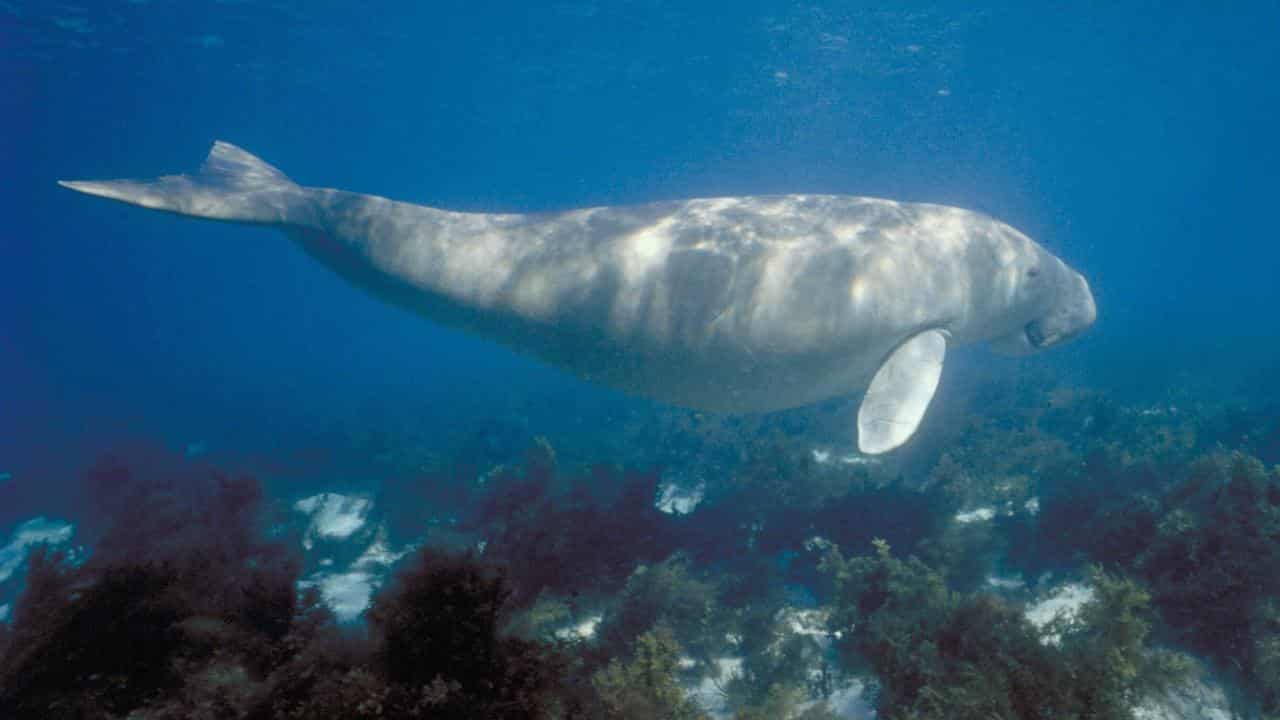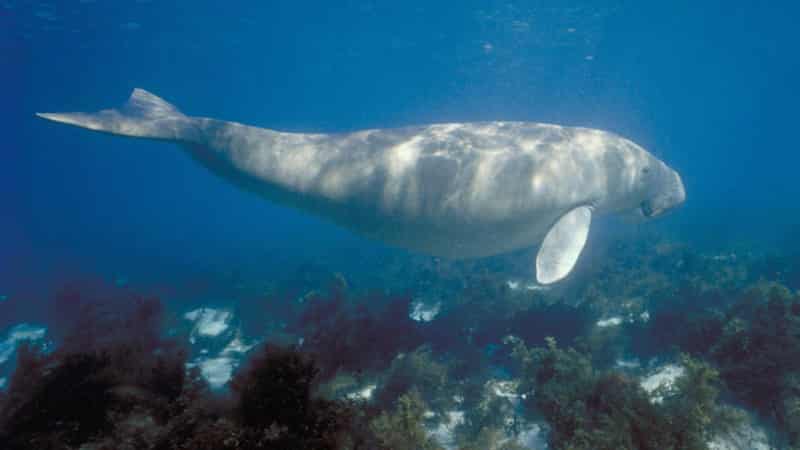
Dugongs, dolphins and turtles will be given even more protection under expanded marine sanctuaries off southeast Queensland.
Expanded safety zones in the Great Sandy Marine Park (GSMP) on the Fraser Coast north of Brisbane were unveiled by the Queensland government on Thursday.
Green zones within the park will increase from 3.9 per cent to 12.8 per cent, Environment Minister Leanne Linard announced, with 28.6 per cent of the marine park to be within highly protected zones.
Gillnet fishing has been banned from yellow zones in the conservation park through waters on the Great Sandy Strait in an area of more than 60,000 hectares.
Ring nets from yellow zones within Baffle Creek, Elliott River, Burrum River system, the Great Sandy Strait and Tin Can Inlet, will also be removed.
Marine life such as dugongs, turtles, grey nurse sharks and the Australian humpback dolphin are regularly spotted within the safety zone.
Tunnel netting and set pocket netting will continue in various parts of the Great Sandy Strait and Tin Can Inlet to ensure a supply of fresh local seafood and bait while the government works to update legislation to remake the zoning plan by 2024.
“The government undertook extensive consultation as part of the GSMP zoning plan review which clearly showed that the majority of those consulted wanted enhanced protections for the Great Sandy Strait," Ms Linard said.
"The government acknowledges that there will be some impact on the commercial fishing operators who work these waters, as well as local seafood processors.
“That is why the government is funding a targeted compensation package as well as a regional economic enhancement package which will support new jobs in tourism, in servicing the recreational fishing sector and in aquaculture."
The zoning plan was overdue for renewal, according to Australian Marine Conservation Society campaigner James Sherwood.
He said back-to-back floods had decimated seagrass meadows in the area which is the primary food source for dugongs and turtles.
"The expansion of fully protected areas will protect additional seagrass habitat that they rely on ... which will help to better protect biodiversity and rebuild fish populations in the marine park," the environmentalist said.
Other changes include new go-slow areas to improve protection for turtles and dugongs, no-anchoring spots to reduce impacts on sensitive habitats and provisions to reduce disturbances to migratory shorebirds.









